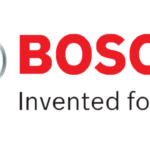The ultimate goal of all sales and marketing is to generate revenue for a business. Therefore, entrepreneurs continually work to generate leads and close deals. Their aim: developing a predictable revenue-generating machine through business streams that maximize profits.
Without enough quality leads, businesses will experience a shortage of revenue. But producing too many leads at the same time may also be a problem. Businesses need adequate processes and resources in place to move leads through their sales pipelines. Otherwise, good leads may turn into dissatisfied prospects instead of raving fans.
How to Make Your Business a Predictable Revenue-Generating Machine
Let’s pull this apart. First, let’s look at the last word: Machine. In this instance, machine means a process, a system, and, possibly, a bit of technology that helps you attract leads, nurture them, and turn them into customers.
Now let’s look at Revenue-Generating. The definition of revenue is money in the door. Revenue-Generating is all the things we do to create a sale. A sale can mean many things, including:
- a promise to buy,
- a contract signed,
- agreeing to a payment plan, and
- collecting payment on the spot.
The next term to focus on is Predictable. No, we are not talking about clairvoyance. We are talking about capturing data on the time it takes to close one sale and using that data to predict future revenue.
The last term to look at in our phrase is Develop. It takes time to capture data and analyze it, so that you may predict future sales. By having a system in place, you will gain an understanding of how many leads it takes to close one sale, and a specific time-frame for each step of the process as the lead goes through your marketing and sales funnel.
The Difference Between Revenue and Sales and Why We Measure Both
As we mentioned earlier, revenue is money in the bank. It’s essential to track cash in the bank as that is how the bills get paid and stakeholders gain their profits. But, if that is the case, why do we need to track sales?
In some businesses, revenue and sales are closely related, for example, if you collect payment at the time of sale. This is the most transparent form of sales to revenue relationship. But even in this straightforward business model, a customer may request a refund. When developing a Predictable Revenue-Generating Machine, you need to know what percentage of sales goes in the bank and stays there.
In other businesses, revenue comes in long after the sale. To complicate it even more, it may come in different disbursements. If this is the case in your business, you will want to track that because it influences your cash flow. You want to make sure that you have enough cash to cover your expenses as they come due and a return to shareholder equity.
 The further the payment gets from the activities that generate the sale, the harder it is to measure the strategies and tactics that it took to get the lead. It also makes it much more challenging to set team goals. Let’s look at this funnel, for example. The top of this funnel represents both a specific stage in the funnel and time.
The further the payment gets from the activities that generate the sale, the harder it is to measure the strategies and tactics that it took to get the lead. It also makes it much more challenging to set team goals. Let’s look at this funnel, for example. The top of this funnel represents both a specific stage in the funnel and time.
If we measure only the revenue, then we lose the opportunity to impact income and cash flow earlier in the funnel.
Another consideration is the systems used. Often revenue and sales are captured in different systems. Revenue tends to support the accounting process, while Sales tends to support the marketing process. Revenue tends to need some time for reconciling to ensure accuracy. Sales typically come in higher than actual revenue and reflect the real work being done to attract that customer.
Setting Goals for Sales and Revenue
When setting goals, it is easier to set and track goals based on client purchases. That’s because it is easier to achieve goals that are understood. Measuring a full sale versus segmented revenue goals can get complicated.
For i nstance, let’s assume we know that we close 30% of the leads that we capture. The average sale of each lead sold is $100. You have a monthly goal of $12,000.
nstance, let’s assume we know that we close 30% of the leads that we capture. The average sale of each lead sold is $100. You have a monthly goal of $12,000.
In this scenario, we know that we need 120 sales for the month. According to our figures, we need to have 400 leads generated to hit our goal.
Eventually, it is still important to track the sales generated with the revenue earned. Again, be sure to understand their predictability and determine if there are any recurring issues with any specific lead-generating sources, causing lost revenue.
Once you have begun to track your leads and capture the amount of time it takes from lead capture to sale to the final revenue, you have effectively Developed a Predictable Revenue-Generating Machine. Need more help? Contact us, and we can help you!















